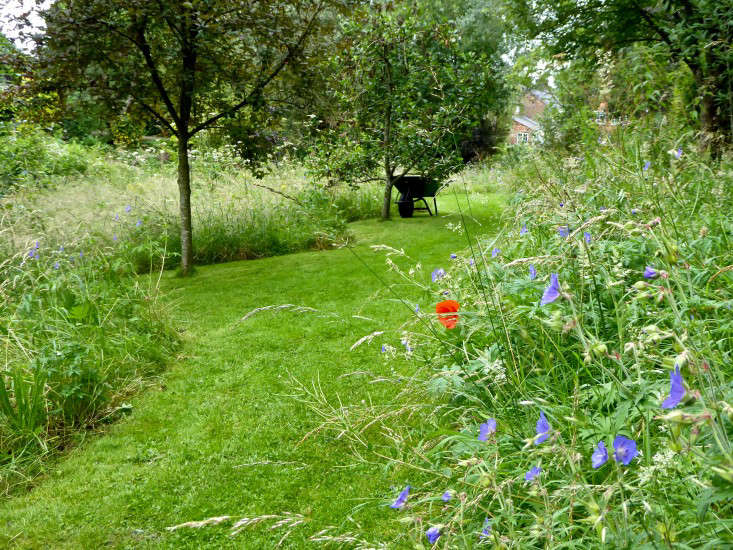The concept of flower beds, like head gardeners, may need refreshing. Plants don’t take orders, despite centuries of trying. These days, a gardener is more like an art director planning effects. Enter the “garden director” who takes note of what plants want to do and creates an atmosphere in which free spirits can express themselves.
Problem: My plants won’t do what they’re told.
Solution: Maybe they’re trying to tell you something.
Photography by Jim Powell.

Gravel gardening makes a mockery of the old rule-driven approach. Ideal conditions for plants involve the right amount of light, moisture, and the quality of soil. If a plant finds the right conditions on its own, or with a little encouragement, it will settle there. Seeds germinate beautifully in gravel, the natural outdoor alternative to a pot containing compost and horticultural grit.

Foxgloves are supposed to prefer a semi-dappled glade, yet they seed themselves in dry-stone walls, in full sun. There’s no point in transplanting them to the “right” place, unless you nurture them thereafter, with plenty of water and a reasonable chance of failure. When they self-seed, they don’t need looking after; just thinning out.
Some plants, like erigeron or nasturtium, like it really rough. A nurturing person finds it difficult to provide the un-hospitable, arid conditions they need, until they witness an escapee doing its own thing. There is nothing like personal experience when “directing” the garden.

Thinking about where plants come from and how they are found, growing in the wild, sheds light on their potential for your garden. Peonies are accused of flowering for too short a time (just when everything else becomes interesting), unable to justify the space they take up. Growing them with other perennials and bulbs in grass will mean that their flowering is a bonus, instead of a pressured moment. Happily, they don’t need staking grown like this and neither do the cornflowers and geraniums nearby.

Camassia, primroses, and daffodils bring a sense of design (though not necessarily order) to this scene, so that dandelions and the occasional giant hogweed is not such an issue.

Gravel, hoggin, rubble: This kind of thing is a great growing medium, smoothing out uneven areas. Pebbles provide a cooling, moisture-retaining mulch. For long-term plant happiness, a good garden depends on what is going on underneath, so, boring though it sounds, soil preparation is key. A rich, well-draining loam is the ideal.
For a miraculously lush dry garden see Can This Garden be Saved: “It Barely Rains; I Live in a Desert.”

Garden truisms are tempting to ignore in trying to forge one’s own way, but wandering plants really do bear out the expression: “right plant for the right place.” This explains the plants that, no matter how much you want them to grow in a particular place, insist on looking dejected. “I repeat what I often say,” writes Beth Chatto at the end of her book Gravel Gardening: “If you choose plants adapted by nature to the conditions you have to offer, they will do well.” This is not always in a flower bed.

For more garden solutions, you can order my new book, My Garden is a Car Park: and Other Design Dilemmas, for £12.99 from Amazon UK. For US readers, The Problem with My Garden can be ordered for $17.99 from Amazon.com.
For more gravel garden inspiration, see:
- Expert Advice: 11 Tips for Growing a Gravel Garden from Beth Chatto.
- Hardscaping 101: Gravel Gardens.
- 5 Favorite Flowers for a Gravel Garden.
- Hardscaping 101: Pea Gravel.














Have a Question or Comment About This Post?
Join the conversation (0)